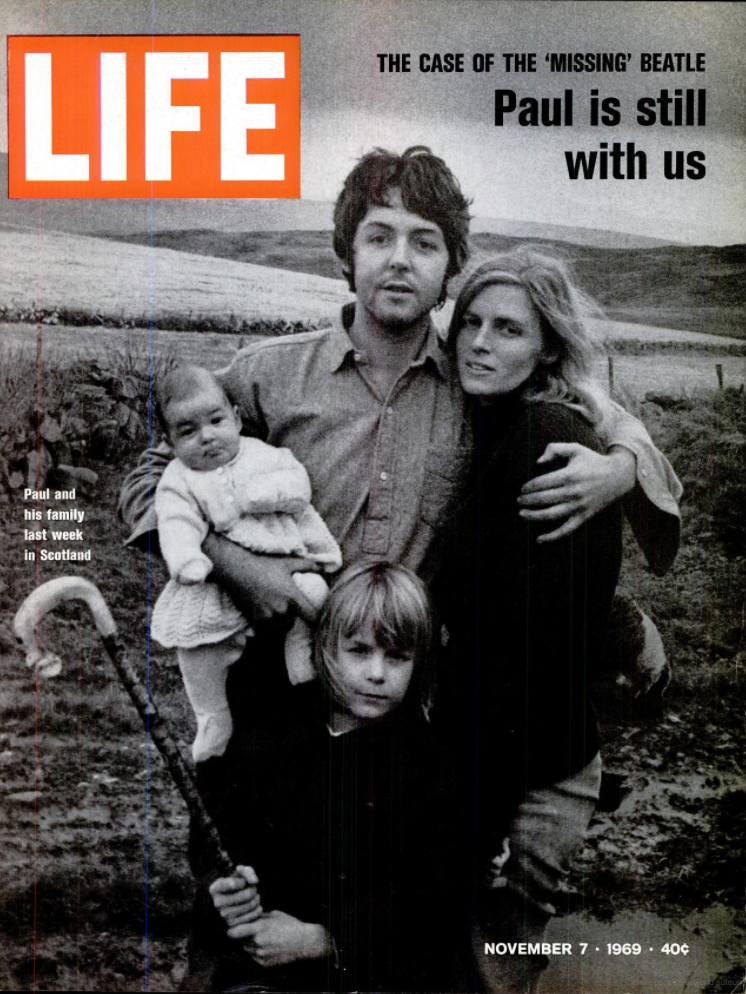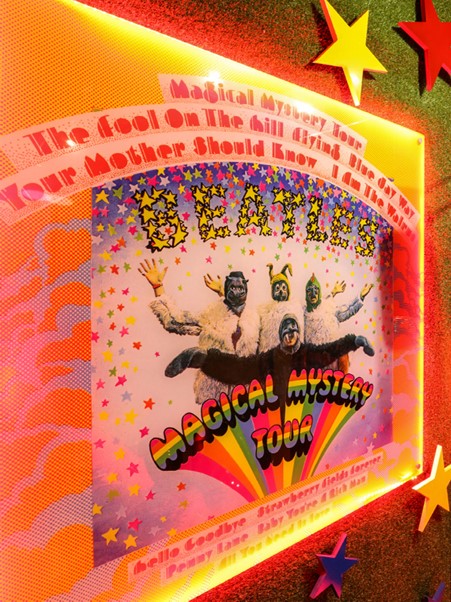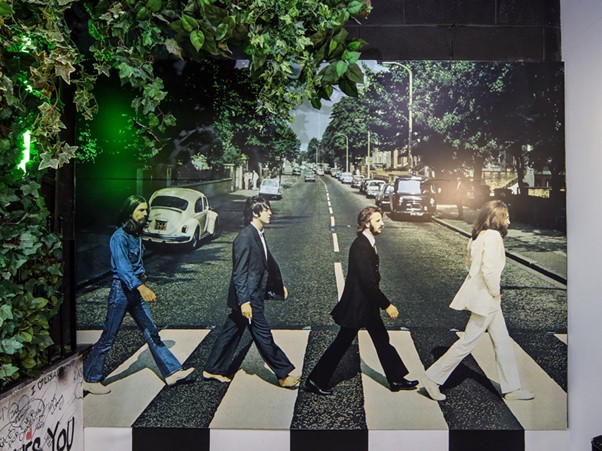As avid Beatles fans, we have heard every fact, story and theory surrounding the Fab Four. From in-depth analyses of lyrics they wrote to transcripts of private conversations they had in the studio, we’re lucky to have such readable material on our favourite band so readily available. But being the most documented band of all time doesn’t just come with its fun factoids, but with its wild theories and deductions too. What happens when fans take their analyses one step further and start looking for hidden meanings? When listeners begin to search recordings back to front for secret messages? Any Beatles fan can answer that – conspiracies, such as the legendary ‘Paul Is Dead’ theory, are born.
The Theory…
The theory goes that on 9th November 1966, Paul McCartney was tragically killed in a car crash on his way home from working on the Sgt. Pepper album in studio. The Beatles, wanting to save their fans from the heartache of losing Paul and dealing with the loss of their bandmate, decided to conceal the truth (perhaps not by choice) and replaced Paul with the winner of a Paul McCartney lookalike contest – ‘William Campbell’ or ‘Billy Shears’. In the years following the tragic incident, the remaining Beatles were wracked with guilt and began leaving clues and messages in their music and material to communicate the truth to the fans.

Cover of Life Magazine, 7 Nov 1969.
The Truth…
In reality, there is no evidence to support this story. Although Paul was involved in two car accidents around this time, multiple witnesses and Paul himself confirmed shortly afterwards that he was perfectly well. Additionally, there is no evidence that a lookalike contest ever took place and no trace of William Campbell ever existing. Apart from a few odd whispers here and there, the rumour never really gained any traction for the next two years until 17th September 1969 when a student called Tim Harper published an article titled ‘Is Beatle Paul McCartney Dead?’ in Drake University’s student newspaper in Iowa, USA. The article is understood to be the first published work on the ‘Paul Is Dead’ theory and the catalyst in transforming the conspiracy from an irrelevant myth to an international phenomenon.
A lot of us, because of Vietnam and the so-called Establishment, were ready, willing and able to believe just about any sort of conspiracy.
– Tim Harper (Drake Times-Delphic, 1969)
Following the release of the article, a caller to Detroit radio station WKNR-FM informed DJ Russ Gibb of the rumour live on air. Intrigued, Gibb and other callers spent the remainder of the show discussing the rumour and its clues. Several other radio stations in the New York area began to pick up the rumour in the weeks following, including WABC who’s audience during the discussion in the early hours of 21st October 1969 spread across 38 US states. Before long, the rumour became known all over the world and popular music’s biggest conspiracy theory became forever famous.
Someone from the office rang me up and said, ‘Look, Paul, you’re dead.’ And I said, ‘Oh, I don’t agree with that.’
– Paul McCartney (Rolling Stone, 1974)
The ‘Evidence’…
In the 50 years following the conspiracy first gaining international fame, Beatles fans all over the world have submitted their own ideas of supporting ‘evidence’. While most are far-fetched, several have become synonymous with the conspiracy over time for their unusual, albeit coincidental nature.
John Lennon was particularly vocal about his annoyance of people who read too much into the lyrical meanings of Beatles songs and in response, wrote ‘Glass Onion’ in 1968 to purposely confuse the culprits. Ironically, ‘Paul Is Dead’ conspiracy theorists took the lyrics to be an admittance of Paul’s death – particularly the lyrics “Well here’s another clue for you all / The walrus was Paul”. Fans have suggested that this is not only a reference to the song ‘I Am the Walrus’ written by John Lennon for the Magical Mystery Tour album, but more specifically to the album cover. The artwork portrays the band in costumes dressed as animals, three of which are stood shoulder to shoulder dressed in white ‘fur’, whilst one member (the walrus) appears separate from the others, dressed all in black – a colour often associated with mourning. Although it may seem an odd coincidence, fans have often debunked the so called ‘evidence’ as not only did John write and sing ‘I Am the Walrus’ himself but can be seen wearing the very same walrus costume in the Magical Mystery Tour film.

Magical Mystery Tour album cover – The Beatles Story, Liverpool.
Another popular point of discussion surrounding the conspiracy is that of the Abbey Road album cover where Paul is pictured walking barefoot and out of step with the other Beatles (in some cultures, the dead are buried without their shoes). Some fans have understood the album cover to be morbid symbolism of a funeral procession, with John’s white suit embodying the colour of mourning in some Eastern religions, George’s denim symbolising the gravedigger and Ringo’s black suit being traditional funeral wear. Although an interesting theory, the reality is a lot more plausible. Paul can be seen in other photographs taken during the shoot wearing sandals and, according to witnesses, kicked them off because they were uncomfortable. Additionally, their outfit choices were completely common of how they dressed at that time. Others have pointed out that in the photograph, Paul is holding his cigarette in his right hand even though he’s left-handed. In truth, Paul almost always held his cigarette in his non-dominant hand.

Abbey Road album cover – The Beatles Story, Liverpool.
They said I was wearing a white religious suit. I mean, did Humphrey Bogart wear a white religious suit? All I’ve got is a nice Humphrey Bogart suit.
– John Lennon (WKNR, 1969)
Several other ‘clues’ discovered by fans involve secret messages that can be heard in various Beatles songs. One popular example is the suggestion that John Lennon can be heard saying “I buried Paul” in the final section of ‘Strawberry Fields Forever’. As can be heard more clearly on the Anthology 2 album version of this song, John is actually saying “Cranberry sauce” here – a quirky lyric typical of John’s humour. Other clues have been put forward by fans playing different Beatles songs backwards, such as the suggested “Turn me on, dead man” message hidden in the “Number nine” vocal loop in ‘Revolution 9’, or the lyric “monsieur, monsieur, monsieur, how about another one?” in ‘I’m So Tired’ sounding suspiciously like “Paul is dead, man, miss him, miss him”. Although an interesting find, such examples have been repeatedly debunked to be nothing more than coincidences. In fact, the trend of looking for secret messages from playing songs backwards has been writhe for decades. Several other popular groups of the 20th century have had their share of dark conspiracy theories too, such as AC/DC, The Eagles and Led Zeppelin who have all been accused at times of brainwashing listeners with Satanic messages as a result of the trend.
Those freaks was right when they said you was dead
– John Lennon (‘How Do You Sleep’, 1971)
Although there will always be some fans who believe the ‘Paul is dead’ story, most view it as a wild conspiracy theory. That said, never before or since has there been such a unique cultural occurrence. Unlike other major conspiracy theories that barely catch the attention of the mainstream press, newspapers, magazines, radio stations and even television networks across the globe were all asking whether Paul was really dead by late 1969. What started out as a rumour and ended up an international phenomenon will now forever be known as music’s biggest conspiracy theory and will always be remembered alongside the greatest band that ever lived.
